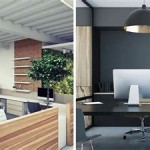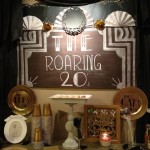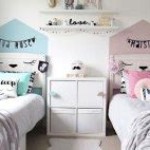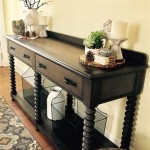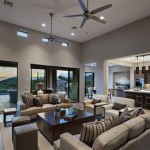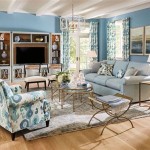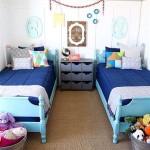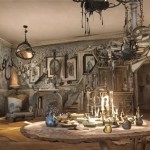Decorating Long Narrow Living Room With Fireplace
Decorating a long, narrow living room, especially one featuring a fireplace, presents a unique set of challenges. The elongated layout can often feel cramped and awkward, while the fireplace, though a desirable feature, can further complicate spatial arrangement. Successful design requires careful consideration of furniture placement, traffic flow, color palette, and accessory selection. The goal is to create a space that is both functional and aesthetically pleasing, maximizing the available square footage and minimizing the feeling of claustrophobia.
The fireplace's presence dictates the focal point of the room. It naturally draws the eye and influences furniture arrangement. One common mistake is to place too much furniture directly facing the fireplace, constricting the circulation path and making the room feel even narrower. Conversely, ignoring the fireplace's presence and treating it as merely an architectural element can lead to a disjointed and unbalanced design. Therefore, an effective decorating strategy balances the fireplace's significance with the need for open space and intuitive movement.
Color selection plays a crucial role in altering the perception of space. Light and airy colors tend to make a room feel larger and more open, while darker colors can visually shrink it. This is especially pertinent in a narrow room. Pale shades of white, cream, gray, and pastel colors are generally recommended for the walls. Strategic use of accent colors, such as incorporating them in artwork, cushions, throws, or small decorative objects, can add visual interest without overwhelming the space. Avoid painting the long walls in dark colors, as this will accentuate the room's narrowness.
Optimizing Furniture Placement for Flow and Function
Furniture placement is critical for creating a functional and visually appealing long, narrow living room with a fireplace. The primary objective is to facilitate easy movement and maximize the usable space. Consider the fireplace's location when determining the optimal layout. If the fireplace is located on one of the short walls, the challenge is to balance the visual weight of the fireplace with other elements in the room. If the fireplace is on one of the long walls, the challenge is to avoid creating a bowling alley effect.
Avoid placing all furniture against the walls, as this tends to accentuate the narrowness of the room. Instead, consider floating some pieces, particularly the sofa or chairs, slightly away from the walls. This creates a sense of depth and allows for easier circulation. The sofa can be positioned perpendicular to the longest wall, creating a natural barrier between the living area and other parts of the room, such as a dining area or entryway. Place a console table behind the sofa to further define the space and provide a surface for lamps and accessories.
Utilize area rugs to define different zones within the room. A rug placed in front of the fireplace and under the seating area helps to anchor the furniture and create a cohesive gathering space. Consider using a runner rug to visually widen the room. Ensure the rug is large enough to accommodate at least the front legs of the main furniture pieces. Smaller rugs can make the room appear disjointed and smaller.
Choose furniture with a low profile to avoid blocking sightlines and making the room feel cramped. Sofas and chairs with exposed legs or smaller arms tend to feel less bulky than those with solid bases and large arms. Opt for multi-functional furniture, such as ottomans with storage or coffee tables with lift-top mechanisms, to maximize space efficiency. Consider nesting tables that can be easily stored when not in use. Avoid oversized furniture, as it will overwhelm the space and impede movement.
When arranging furniture around the fireplace, maintain a safe distance between seating and the hearth. Consider the size and style of the fireplace when choosing furniture. A large, ornate fireplace may require larger, more substantial furniture to balance its presence, while a smaller, more contemporary fireplace may call for lighter, more minimalist furniture.
Enhancing Perception of Space Through Visual Tricks
Several visual tricks can be employed to make a long, narrow living room appear wider and more spacious. These techniques involve manipulating lines, light, and perspective to create the illusion of greater depth and width. Applying these tricks effectively can significantly improve the room's overall aesthetic and functionality.
Mirrors are powerful tools for creating the illusion of space. Placing a large mirror on one of the long walls can visually double the width of the room. Consider positioning the mirror opposite a window to reflect natural light and brighten the space. Alternatively, a gallery wall of smaller mirrors can create a similar effect while adding visual interest. Position mirrors strategically to avoid reflecting clutter or unwanted views.
Vertical stripes can visually lengthen the walls, making the room appear taller. This can be achieved through wallpaper, paint, or even carefully selected artwork. However, use vertical stripes sparingly, as too many can be overwhelming. Horizontal stripes, on the other hand, can visually widen the room, although they can also make the ceiling feel lower. Consider using horizontal stripes in smaller doses, such as on decorative pillows or rugs. The key is to achieve a balance between vertical and horizontal elements.
Create visual interest by layering lighting. Incorporate a combination of overhead lighting, such as recessed lights or a chandelier, with task lighting, such as table lamps and floor lamps. This creates depth and dimension, making the room feel more inviting. Use dimmer switches to control the intensity of the lighting and create different moods. Consider highlighting the fireplace with accent lighting to draw attention to its architectural details.
Minimize clutter to create a sense of openness and spaciousness. Clutter can make a narrow room feel even smaller and more cramped. Store items out of sight in cabinets, drawers, or baskets. Regularly declutter and get rid of items that are no longer needed or used. Adopt a minimalist approach to decorating, focusing on a few carefully selected pieces rather than overwhelming the space with too many accessories.
Use artwork to create a focal point and draw the eye away from the room's narrowness. Hang a large piece of artwork on one of the short walls to create a sense of depth. Alternatively, create a gallery wall of smaller pieces to add visual interest and personality. Choose artwork with colors and themes that complement the room's overall décor.
Balancing Functionality and Aesthetics Around the Fireplace
Integrating the fireplace seamlessly into the living room design requires careful consideration of both functionality and aesthetics. The fireplace should not only be a visually appealing focal point but also a practical element that enhances the room's overall usability. The surrounding area should be designed to be both comfortable and functional, providing a harmonious blend of style and practicality.
Consider the fireplace's style when choosing furniture and accessories. A traditional fireplace with ornate detailing may call for more formal furniture and accessories, while a contemporary fireplace with clean lines may be better suited to minimalist décor. The fireplace mantel can be used as a display surface for artwork, photographs, or decorative objects. Choose items that complement the fireplace's style and add visual interest to the space.
Create a comfortable seating area around the fireplace. Arrange chairs and sofas to encourage conversation and create a cozy atmosphere. Consider adding a coffee table or ottoman to provide a surface for drinks and snacks. Use soft textiles, such as blankets and pillows, to add warmth and comfort. Pay attention to the scale of the furniture and ensure it is proportionate to the size of the fireplace and the room.
Ensure adequate lighting around the fireplace. Install sconces on either side of the fireplace to provide ambient lighting. Alternatively, place a floor lamp or table lamp nearby to provide task lighting for reading or other activities. Consider using a dimmer switch to control the intensity of the lighting and create different moods. Avoid placing lamps directly on the mantel, as this can create a cluttered look.
Incorporate storage solutions near the fireplace to keep firewood and other accessories organized. Consider building custom shelving or cabinets on either side of the fireplace to provide ample storage space. Alternatively, use decorative baskets or bins to store firewood and other items. Keep the area around the fireplace clean and clutter-free to maintain a sense of order and spaciousness.
Consider the fireplace's functionality when designing the surrounding area. If the fireplace is primarily used for heating, ensure that furniture is placed at a safe distance from the heat source. Consider adding a fireplace screen to protect against sparks and embers. If the fireplace is primarily used for aesthetic purposes, focus on creating a visually appealing and harmonious design. The fireplace should be a focal point that enhances the room's overall appeal.

Long Narrow Living Room With Fireplace On End Wall Google Search Small Family

Narrow Living Room With Fireplace Rectangle Large Layout

How To Arrange Furniture In A Long Narrow Living Room Solutions For Tricky Spaces

Before And After Maximize A Long Narrow Living Room Erika Ward Interiors Atlanta Interior Design Decorating Advice

Jrl Interiors How To Arrange Furniture In A Long Narrow Living Room

Long Narrow Rooms

Working With A Long Narrow Living Room Emily Clark

How To Arrange Living Room Furniture With A Tv And Fireplace

Before And After Maximize A Long Narrow Living Room Erika Ward Interiors Atlanta Interior Design Decorating Advice

How To Decorate Long Narrow Living Room Home Design Lover
Related Posts
